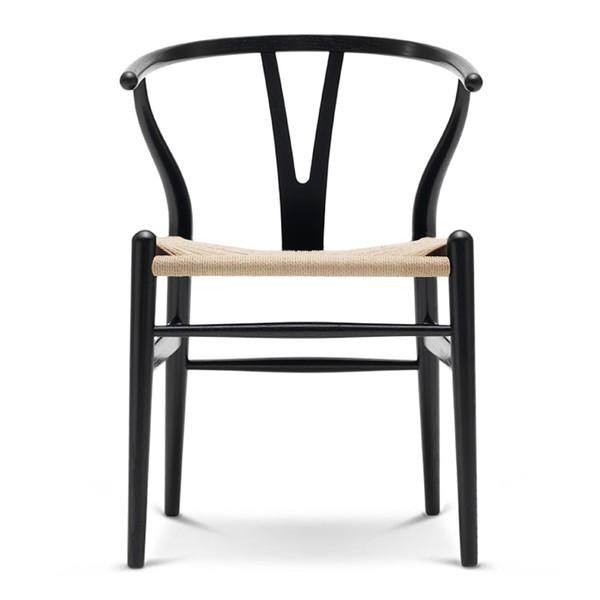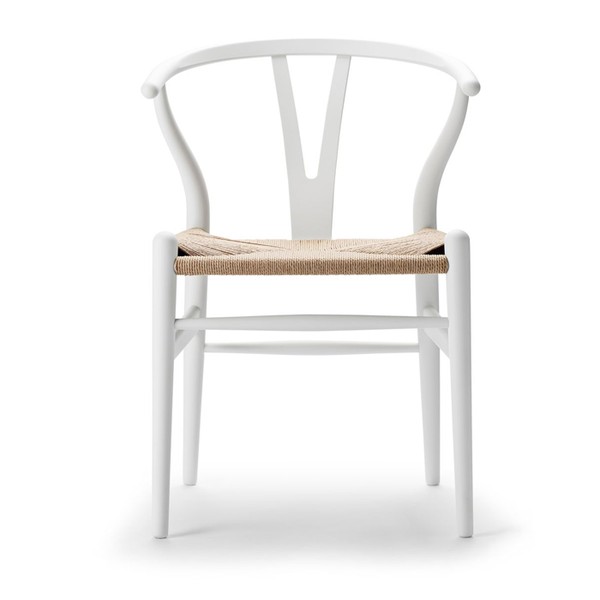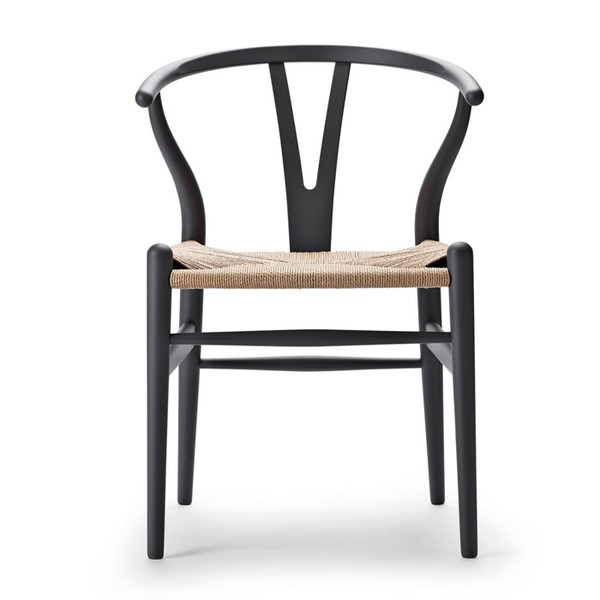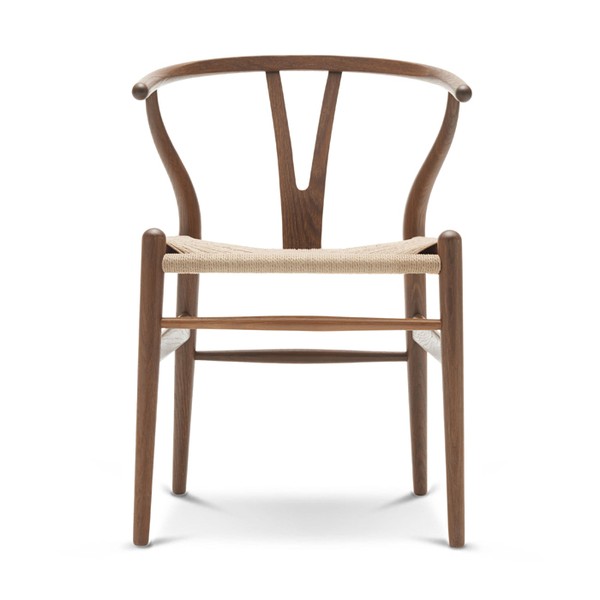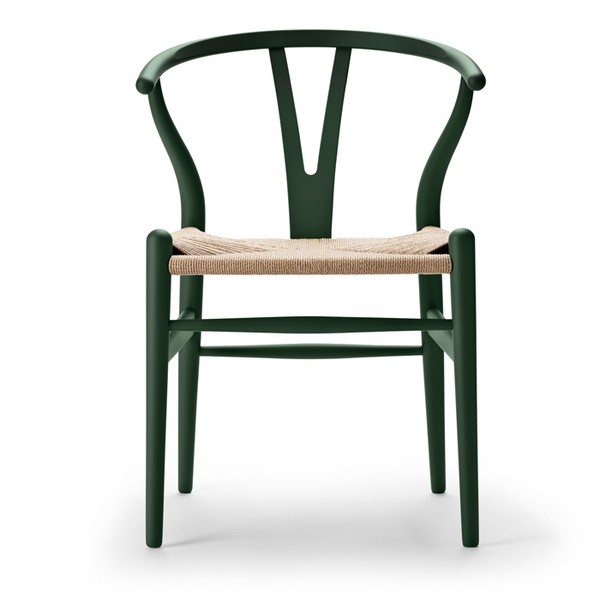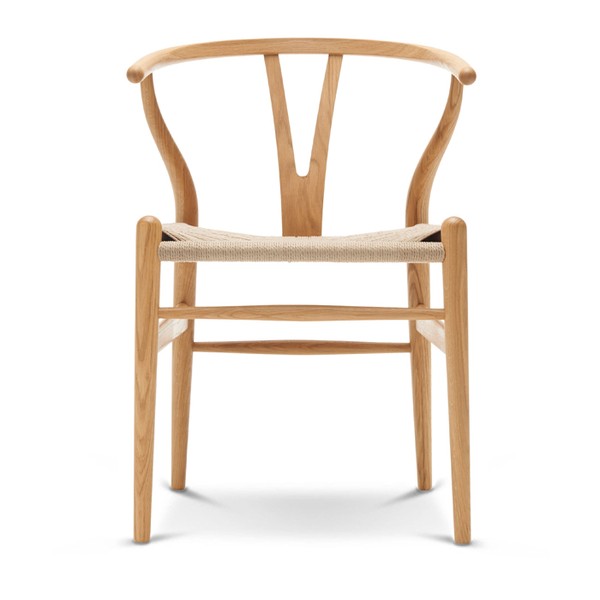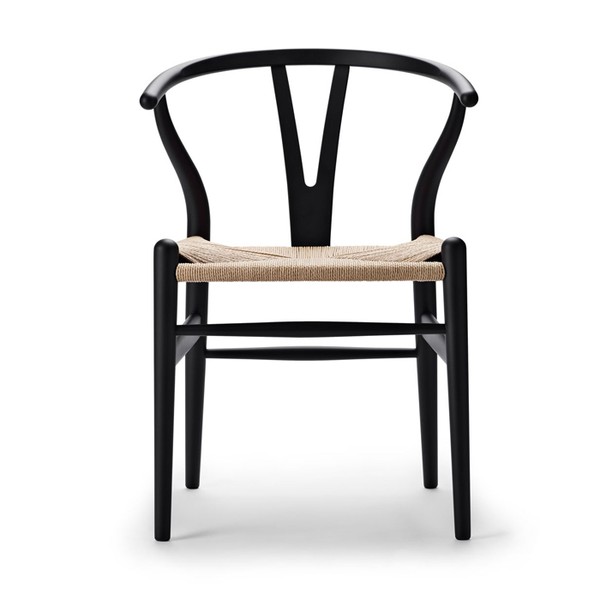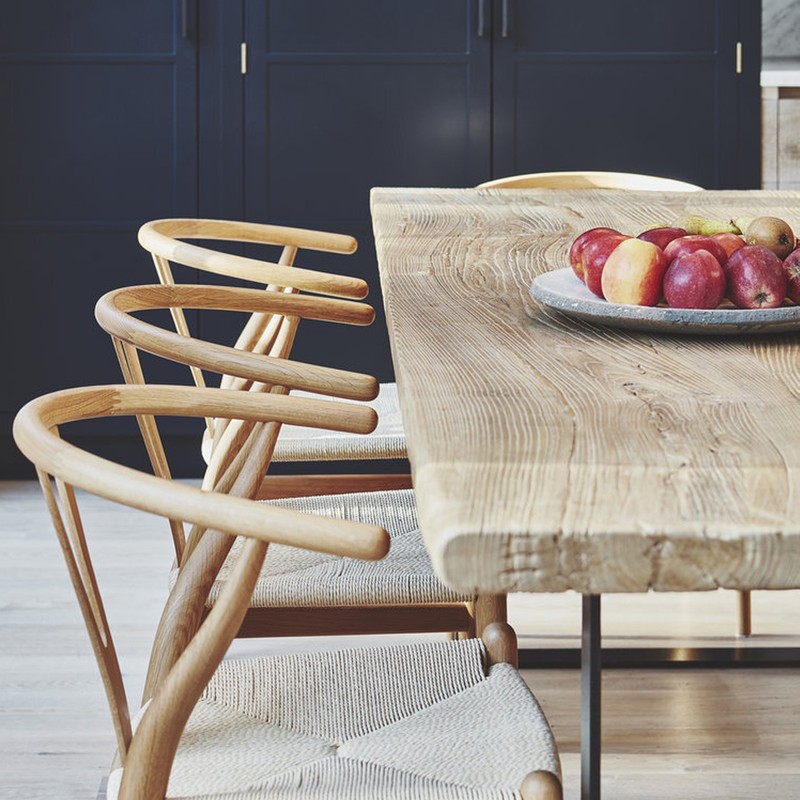
One Icon, Three Ways To Style It
About The Piece
The frame, including the distinctive crescent-shaped backrest and Y-shaped 'wishbone' support, is hand-crafted and painted with seven coats of lacquer – these days limited edition colours and natural finishes offer plenty of choice. The seat is then woven by hand with 120 metres of paper cord to create aesthetically-pleasing support.
Elena Paparozzi, senior furniture and brands buyer at Heal’s, is a huge fan. “The Wishbone Chair from Carl Hansen & Søn has become a true design icon since its launch in 1950. Hans J. Wegner artfully combined functionality with simple aesthetics to design a versatile piece that sits easily in dining rooms, kitchens and living spaces across the world,” she says.
Its clean lines and pared-back silhouette emphasise the expert craftsmanship and high-quality natural materials which go into each piece. “Over 100 individual steps are involved in creating the chair, with over an hour needed to hand-weave the seat alone,” Elena explains. “This attention to detail is fundamental to the chair’s longevity and robustness, as well as its comfort. The characterful Y-shaped backrest provides additional ergonomic support, while also adding a touch of refined elegance.”
The Wishbone Chair’s timeless beauty is a testament to the golden age of simple Danish design, with its lightweight frame, focus on skilful manufacturing, and distinctive look. “Each chair is made to order and, in addition to the range of woods on offer, a special edition version of the CH24 Wishbone Chair was recently launched at Heal’s, adding a variety of soft matte colourways, including red and green.”
Where To Use It
In The Dining Room
“The Wishbone Chair has been a favourite of mine over the years. I love the sculptural, simple and unique design. Not only are they beautiful, they're extremely durable; my children constantly climb on them and spill food – yet they wipe down easily and still remain in pride of place in the kitchen.” – Anna Hewitson
Tip: Use a table in a contrasting material, such as marble, to create interest, while sticking with a natural theme, or juxtapose an unrefined, rough-edged dining table with the chair's sleek curves and varnished finish - we love the way Blakes have styled this above. If you choose a painted colour for the chair, this can be useful to pull in other elements within the room, such as the flooring or soft furnishings.
In The Study
“I can’t think of a single home I wouldn’t use a Wishbone Chair in; they’re incredibly versatile and just have a unique way of standing their ground in any environment, which is why they always work so well on their own. They’re a timeless classic with beautiful curves and proportions, and that’s before we even mention the lovely combination of materials.” – Irene Gunter
Tip: The curves of the Wishbone Chair compliment the linear design of a desk. Be sure to measure the bottom of the desk and the top of the arms so it can be tucked in.
As An Accent
“Wishbone Chairs are incredibly useful for both modern and traditional projects, giving a more conservative room a fresher edge. There are a huge variety of finishes and colours to choose from and I’m keen to use the new limited-edition striking blue from a collaboration with llse Crawford – superb on its own in a hallway or a bedroom corner. Danish Design at its very best.” – Alice Leigh Design
Tip: A welcome addition to a hallway or bedroom corner, the spaces and openness of this design allow it to be eye-catching, without being too dominating. Pair with natural textures or choose a bold finish to add drama.
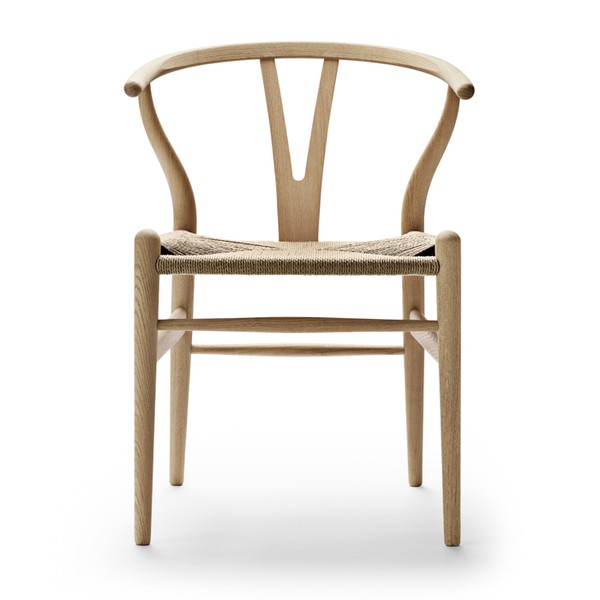
DISCLAIMER: We endeavour to always credit the correct original source of every image we use. If you think a credit may be incorrect, please contact us at info@sheerluxe.com.









